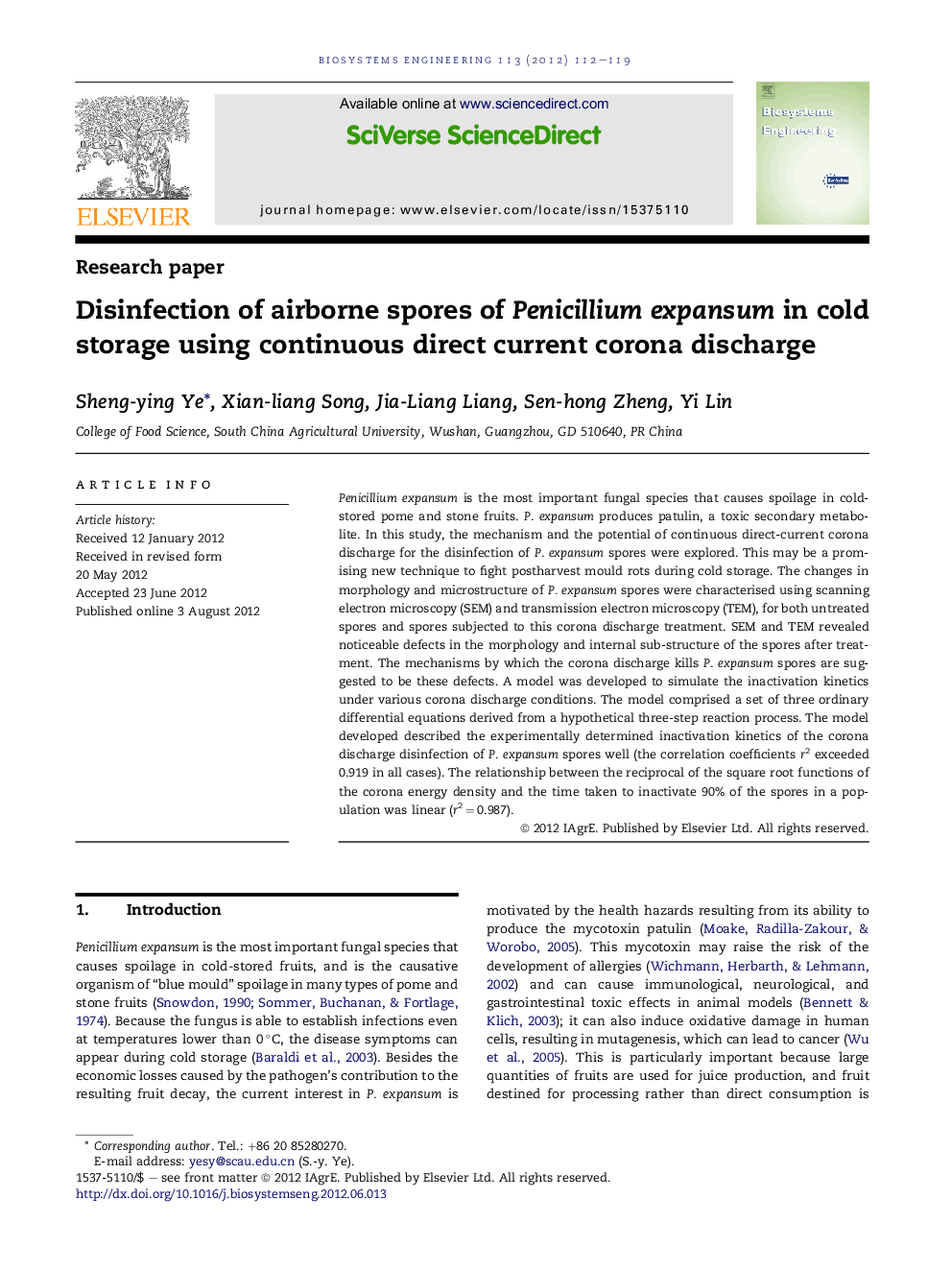| Article ID | Journal | Published Year | Pages | File Type |
|---|---|---|---|---|
| 1711452 | Biosystems Engineering | 2012 | 8 Pages |
Penicillium expansum is the most important fungal species that causes spoilage in cold-stored pome and stone fruits. P. expansum produces patulin, a toxic secondary metabolite. In this study, the mechanism and the potential of continuous direct-current corona discharge for the disinfection of P. expansum spores were explored. This may be a promising new technique to fight postharvest mould rots during cold storage. The changes in morphology and microstructure of P. expansum spores were characterised using scanning electron microscopy (SEM) and transmission electron microscopy (TEM), for both untreated spores and spores subjected to this corona discharge treatment. SEM and TEM revealed noticeable defects in the morphology and internal sub-structure of the spores after treatment. The mechanisms by which the corona discharge kills P. expansum spores are suggested to be these defects. A model was developed to simulate the inactivation kinetics under various corona discharge conditions. The model comprised a set of three ordinary differential equations derived from a hypothetical three-step reaction process. The model developed described the experimentally determined inactivation kinetics of the corona discharge disinfection of P. expansum spores well (the correlation coefficients r2 exceeded 0.919 in all cases). The relationship between the reciprocal of the square root functions of the corona energy density and the time taken to inactivate 90% of the spores in a population was linear (r2 = 0.987).
►We studied a DC corona discharge to control P. expansum spore bioaerosols. ►The cellular structure of the spores was characterized after the discharge treatment. ►A simplified kinetic model was proposed to simulate the inactivation kinetics. ►The corona discharge disrupted the spores’ membranes and internal sub-structures. ►The model developed described the experimentally determined kinetics well.
